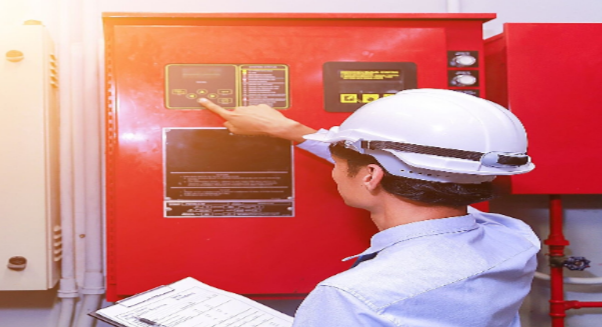London, a city characterized by its iconic skyline and bustling urban life, is home to numerous high-rise apartment buildings that define its modern architectural landscape. While these structures offer luxurious living spaces and spectacular views, they also present unique challenges when it comes to fire safety. Conducting effective Fire Risk Assessment London for high-rise apartments in the city is crucial to ensuring the safety and well-being of residents. It involves evaluating potential fire hazards, assessing the effectiveness of current safety measures, and implementing strategies to mitigate risks. At [Your Company Name], we specialize in providing professional fire risk assessment services in London, offering tailored solutions to enhance safety and compliance with regulatory standards.
Understanding the Challenges
High-rise apartments in London face specific challenges that make fire risk assessments complex and critical for safety.
Vertical Evacuation Challenges
One of the primary challenges in high-rise buildings is the vertical evacuation of residents during a fire emergency. Unlike low-rise buildings where evacuation routes are more straightforward, evacuating residents from higher floors can be time-consuming and logistically challenging. Fire risk assessments must account for the building’s design, evacuation procedures, and the capabilities of emergency services to respond promptly.
Compartmentation and Fire Spread
Compartmentation, which involves dividing the building into fire-resistant compartments to prevent the spread of fire and smoke, is crucial in high-rise apartments. Ensuring that compartment walls, doors, and other fire-resistant barriers are properly maintained and compliant with fire safety standards is essential for containing fires within a limited area and allowing safe evacuation for residents.
Building Complexity and Accessibility
High-rise apartment buildings in London often feature complex layouts, multiple entry points, and various amenities such as underground parking and communal areas. Assessing fire risks in these diverse spaces requires thorough inspections to identify potential hazards, ensure adequate fire safety measures are in place, and verify that emergency exits are easily accessible and clearly marked for residents and emergency responders.
Safety Systems and Maintenance
Fire safety systems such as smoke alarms, fire extinguishers, sprinkler systems, and emergency lighting play a critical role in high-rise apartment buildings. Conducting regular maintenance, testing, and inspection of these systems is essential to ensure they function effectively in the event of a fire. Fire risk assessments should include a review of these safety systems to identify any deficiencies and implement corrective measures promptly.
Solutions to Enhance Fire Safety
Addressing the challenges associated with fire risk assessments in London’s high-rise apartments requires proactive measures and strategic solutions.
Comprehensive Fire Safety Training
Educating residents about fire safety protocols, evacuation procedures, and the proper use of fire safety equipment is paramount. Conducting regular fire drills and providing clear instructions in multiple languages can ensure that residents are well-prepared to respond calmly and efficiently during emergencies.
Advanced Fire Detection and Suppression Systems
Installing state-of-the-art fire detection systems that include smoke alarms, heat detectors, and early warning systems can significantly enhance response times and alert residents and emergency services promptly. Similarly, integrating automatic sprinkler systems and fire suppression technologies can help contain fires and minimize damage until firefighters arrive.
Enhanced Building Management and Oversight
Implementing robust building management practices that prioritize fire safety, such as regular inspections, maintenance schedules, and audits, can help identify potential hazards early and ensure compliance with fire safety regulations. Engaging qualified fire safety professionals to conduct periodic fire risk assessments and inspections can provide independent expertise and recommendations for improvement.
Collaboration with Emergency Services
Establishing partnerships with local fire departments and emergency responders is crucial for coordinating fire safety plans, conducting joint training exercises, and enhancing communication protocols. Collaborative efforts ensure that all stakeholders are prepared to respond effectively to emergencies and mitigate risks in high-rise apartment buildings.
Conclusion
Fire risk assessments for high-rise apartments in London present unique challenges due to the vertical nature of these buildings, complex layouts, and diverse occupancy. By understanding these challenges and implementing proactive solutions such as comprehensive fire safety training, advanced detection systems, enhanced building management practices, and collaboration with emergency services, property managers and residents can mitigate fire risks and ensure the safety and well-being of everyone living in these iconic structures, supported by EICR Cert. Ensuring effective fire risk assessments and adherence to fire safety standards is not only a legal requirement but also a moral obligation to protect residents and preserve London’s architectural heritage. By investing in fire safety measures and fostering a culture of preparedness, high-rise apartment buildings can continue to provide safe and secure living environments for generations to come If you want to stay updated with posts like this, please follow us on PRESSMAGAZINE.




